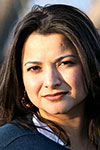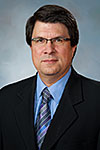More than 10 years ago, Macarena Hernández, now the Victoria Advocate Endowed Professor of the Humanities at the University of Houston-Victoria, quickly
went from being a journalist writing stories to being part of a story when a big journalism scandal was uncovered.

|
| Macarena Hernández |
“A Fragile Trust” is a documentary that tells the story of how Jayson Blair, a journalist at The New York Times, became known as the most infamous serial
plagiarist of the modern era. Hernández was the last person he plagiarized from because she brought it to the attention of The New York Times editors.
A free screening of the documentary will be at 6 p.m. April 15 at the Victoria Fine Arts Center, 1002 Sam Houston Drive. After the screening, Hernández and
filmmaker Samantha Grant will have a conversation and answer questions about the scandal. The event is sponsored by UHV, the UHV School of Arts &
Sciences, the Victoria Independent School District and the Victoria Advocate.
Hernández was the Rio Grande Bureau chief for the San Antonio Express-News when she discovered Blair had plagiarized a story she wrote about a missing U.S.
soldier in Iraq. She’d written her story about the soldier, a Los Fresnos resident, a week before The New York Times story was published.
“My first thought when I read The New York Times story was ‘Why didn’t Jayson call me when he was here for his story because I totally would have helped
him,’” she said about the journalist she had interned with in 1998 at The New York Times. “I read the first paragraph of his story and realized it was
mine. The plagiarism was blatant.”
She read the story when it was posted online at midnight. At 8 a.m. the next day, she contacted her San Antonio Express-News editor to report the
plagiarism. The following day, Hernández learned the soldier was found dead, and his body was on its way back to the Rio Grande Valley. And within a couple
of days, the story had exploded into a scandal that rocked the world’s most prominent newspaper.
Hernández said Blair stole more than just her words. He also stole the mother’s peace when reporters descended on her house to ask about the scandal during
the week she was burying her son.
“It’s not just about plagiarism,” she said. “Jayson created chaos in an already anguished-filled week for this mother. I think about that mother and
reporters knocking on her door to ask about Blair and not her son. If Jayson had not plagiarized the story, she could have had peace during one of the
worst weeks of her life.”
At first, Hernández was hesitant to be a part of the documentary.

|
| Samantha Grant |
“When Samantha approached me about doing an interview for the documentary, I wasn’t sure what to make of it,” she said. “I’d been interviewed by
journalists from around the world and didn’t know that I had anything else to say about the subject. I wondered what she could say that hadn’t already been
said.”
Hernández realized, though, that Grant was covering the story from a different perspective – one that dug deeper into the culture at The New York Times,
Blair’s mental illness and how the Internet was changing journalism. Grant covered the complicated scandal instead of just bits and pieces of the story
like other reporters had, Hernández said.
“This story has fascinated journalists for a long time because if it could happen at The New York Times, it could happen anywhere,” she said. “The scandal
became a teachable moment in newsrooms across the country. It rocked the journalism world.”
Hernández said newspaper editors across the country started looking into their own ethics policies and having conversations with staff members to make sure
they understood what was expected of them. Editors also looked at the pros and cons of using anonymous sources and how to properly credit freelancer
writers.
Grant agreed that the time of the scandal was interesting in the journalism field because the digital era was just blossoming, and it raised a new set of
ethical considerations.
The journalism scandal peeked her interest in 2005 when she was deciding on a film thesis topic at the University of California, Berkeley.
“I wanted this film to open up conversations about media literacy and ethics, and how the digital age was affecting both,” she said.

|
| Jeffrey Di Leo |
Grant said it can be difficult to get the public to talk about media literacy, but by luring people in with a scandal, they seem more willing to discuss
it. During these conversations, Grant has noticed three types of people who watch the film – those interested in Blair, the media scandal or mental
illness.
Jeffrey Di Leo, dean of the UHV School of Arts & Sciences, said it is important that the community discusses the national epidemic of plagiarism.
“We have a rare opportunity to talk about this topic with not only the filmmaker, but also one of the key players in such an important lesson,” he said.
“Attendees will get to learn firsthand how stealing someone else’s work has so many negative consequences.”
Hernández encouraged students, especially those in middle and high school, to attend the screening.
“There is a big problem of plagiarism at universities across the country,” she said. “The sooner kids learn that it is wrong, the better. We live in a
copy-and-paste culture and now, more than ever, it is easier to plagiarize.”